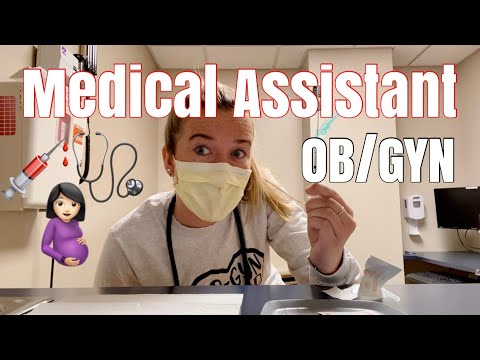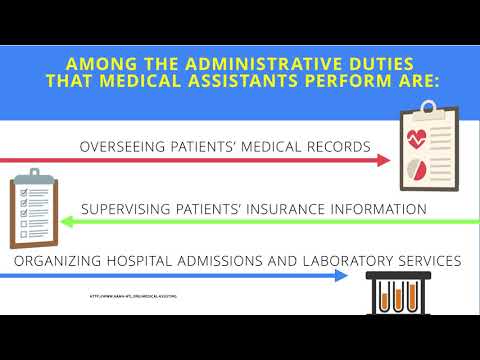The Differences Between an LPN and a Medical Assistant
Contents [show]
If you’re considering a career in the medical field, you may be wondering what the difference is between an LPN and a medical assistant Here’s a quick overview of the two roles to help you make a decision.
Checkout this video:
The difference in job duties between an LPN and a medical assistant
The main difference in job duties between an LPN and a medical assistant is that LPNs provide basic nursing care while Medical assistants perform both clerical and clinical tasks. Although their duties overlap, the scope of practice for each profession is different.
LPNs, or licensed practical nurses, provide basic nursing care. They work under the supervision of registered nurses and doctors. Their duties include taking vital signs, giving injections, wound care, and providing information to patients and families.
Medical assistants, on the other hand, have a more diverse range of duties. They may perform clerical tasks such as scheduling appointments, billing patients, and handling insurance paperwork. They may also perform clinical tasks such as taking medical histories, recording patients’ vital signs, andPreparing patients for examinations. In some states, Medical Assistants may even be allowed to administer medications and give injections.
The different educational requirements for an LPN and a medical assistant
An LPN, or Licensed Practical Nurse, is a nursing position that requires the completion of an accredited vocational program, which takes about a year to complete. In some cases, an LPN may be able to complete a two-year associate’s degree program. After completing the educational requirements, an LPN must then pass the NCLEX-PN exam in order to obtain a license.
A medical assistant, on the other hand, does not need to complete an accredited program nor obtain a license in order to practice. However, many employers prefer to hire medical assistants who have completed some type of formal training, such as a certificate or associate’s degree program. These programs usually take about two years to complete.
The different job outlooks for an LPN and a medical assistant
The job outlooks for both an LPN and a medical assistant are very different. According to the Bureau of Labor Statistics, the job outlook for an LPN is expected to decline by 7% from 2016 to 2026. The job outlook for a medical assistant is expected to grow much faster than average at 29% during the same time period.
The different salary expectations for an LPN and a medical assistant
An LPN (licensed practical nurse) and a medical assistant are both important parts of the healthcare team. They both provide basic patient care and perform routine tasks under the supervision of a registered nurse or doctor. However, there are some key differences between the two roles.
An LPN has more responsibility than a medical assistant. They may administer medications, start IVs, dress wounds, and provide basic patient care. An LPN must have a state-issued license to practice, which requires completing an accredited practical nursing program and passing the NCLEX-PN exam.
Medical assistants do not need a license to practice. They can perform basic clinical tasks such as taking vital signs, collecting lab specimens, and giving injections if they have received proper training. However, their scope of practice is more limited than that of an LPN.
The salary expectations for an LPN are also higher than for a medical assistant. According to the Bureau of Labor Statistics, the median annual salary for an LPN was $46,240 in 2018, while the median annual salary for a medical assistant was $33,610.
The different working environments for an LPN and a medical assistant
The two main types of medical facilities are hospitals and clinics. There are also residential care facilities, but these places tend to employ both LPNs and medical assistants. The majority of medical assistants work in clinics, while the majority of LPNs work in hospitals.
LPNs have more responsibilities than medical assistants. They are able to give some medications, start IVs, and do minor procedures such as changing dressings and inserting catheters. They also have more patient interaction than medical assistants. LPNs answer questions and help patients with activities of daily living such as bathing and eating.
Medical assistants have more direct patient care than LPNs in many cases. They take vitals, give injections, do screenings, and collect laboratory specimens. In some states, they are even allowed to perform certain diagnostic tests, such as EKGs.
The different career paths for an LPN and a medical assistant
An LPN is a Licensed Practical Nurse. An LPN works under the supervision of an RN in a variety of settings, such as hospitals, nursing homes and physicians’ offices. An LPN provides basic nursing care, such as taking vital signs and observing patients. An LPN may also administer medication and injections, start IVs, change dressings, and collect laboratory specimens.
A medical assistant is a health care professional who perform administrative and clinical tasks in a medical office or clinic. Medical assistants are not licensed or certified, but they may have completed a postsecondary education program. Most medical assistants have completed a one-year program that includes both classroom and clinical instruction. Medical assistants perform a variety of tasks, including taking medical histories, scheduling appointments, preparing patients for examination, taking vital signs, drawing blood, and performing basic laboratory tests.
The different skillsets required for an LPN and a medical assistant
An LPN provides basic nursing care under the supervision of a registered nurse or a licensed physician. Duties may include changing dressings, giving baths, taking vital signs, and giving injections. An LPN may also collect samples for lab tests, document patients’ progress, and provide patient education.
A medical assistant performs administrative and clinical tasks in a medical office or clinic. Duties may include scheduling appointments, verifying insurance coverage, taking medical histories and recording vital signs, preparing patients for examination, explaining treatment procedures to patients, assists with Minor surgical procedures performed in the office setting such as cryosurgery and removal of warts.
The different required licenses for an LPN and a medical assistant
LPNs (licensed practical nurses) and medical assistants both work under the supervision of a physician, but their job duties and training requirements are quite different. LPNs must complete an accredited practical nursing program and pass a national licensing exam. Medical assistants, on the other hand, may be trained on the job or Attend a formal medical assisting program. Although both occupations are expected to grow much faster than average in the coming years, job prospects for LPNs are expected to be better than for medical assistants.
The different required certifications for an LPN and a medical assistant
There are many different types of healthcare jobs available, and it can be difficult to understand the differences between them. In this article, we will focus on two specific roles: licensed practical nurses (LPNs) and medical assistants (MAs).
LPNs are registered nurses who have completed a shorter nursing program and passed a national licensing exam. They are qualified to provide basic patient care, including taking vital signs, dressing wounds, and administering injections.
MAs are not required to have a license, but they must complete a certified medical assistant program and pass an exam. They provide support to doctors and nurses by performing tasks such as scheduling appointments, taking medical histories, and giving patients information about their treatments.
While both LPNs and MAs play important roles in healthcare, there are some key differences between the two positions. LPNs have more responsibility for direct patient care, while MAs focus more on administrative tasks. LPNs also generally earn more money than MAs.
The different required continuing education credits for an LPN and a medical assistant
The different required continuing education credits for an LPN and a medical assistant can be confusing. Here is a breakdown of the differences between the two:
LPNs are required to complete continuing education credits (CECs) every three years. Medical assistants, on the other hand, are only required to complete CECs every five years.
LPNs must complete at least 30 CECs every three years, while medical assistants must only complete 15 CECs every five years.
LPNs must have completed a certain number of clinical hours in order to renew their license, while medical assistants are not required to have any clinical experience.
LPNs are licensed by the state in which they practice, while medical assistants are not licensed and regulations vary from state to state.







